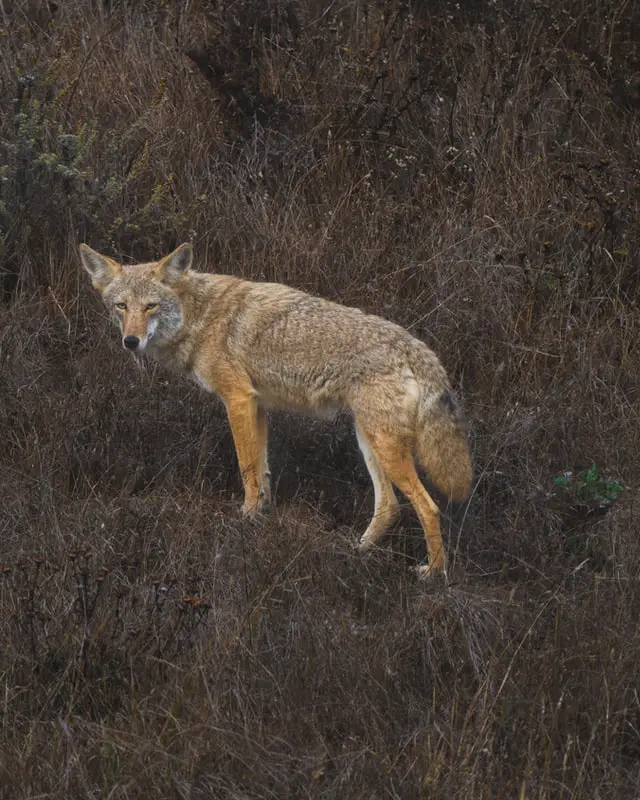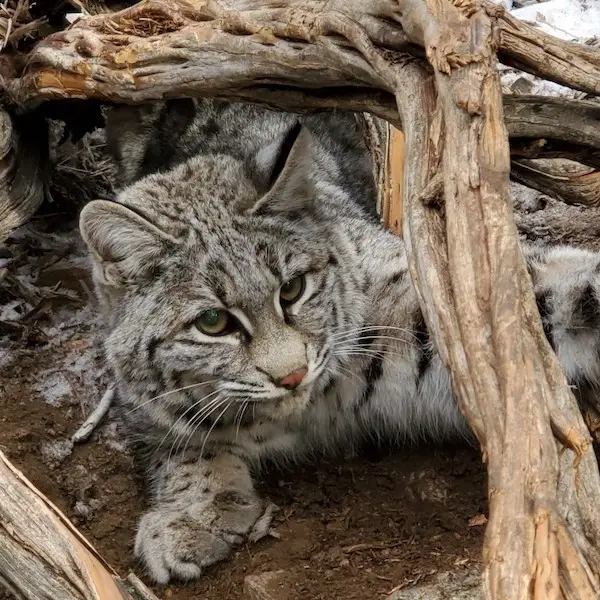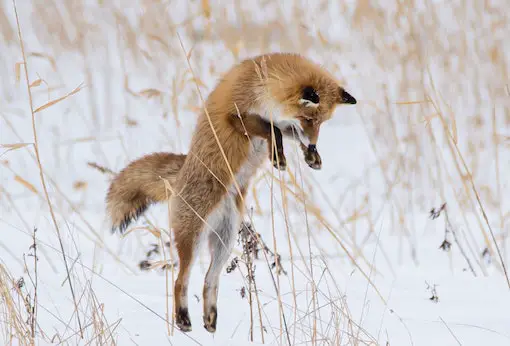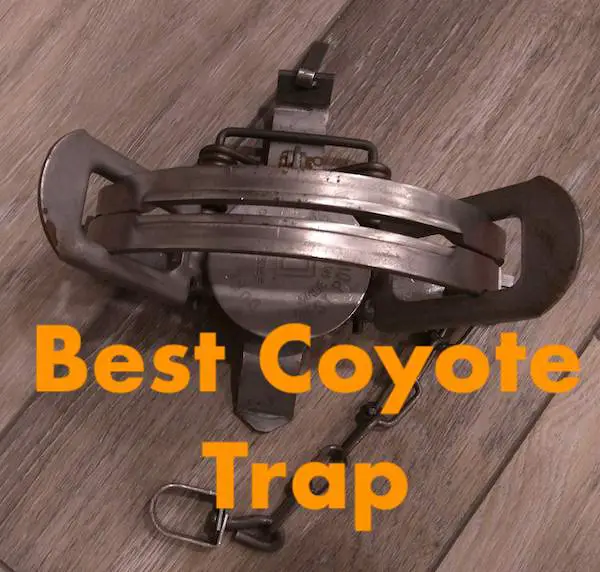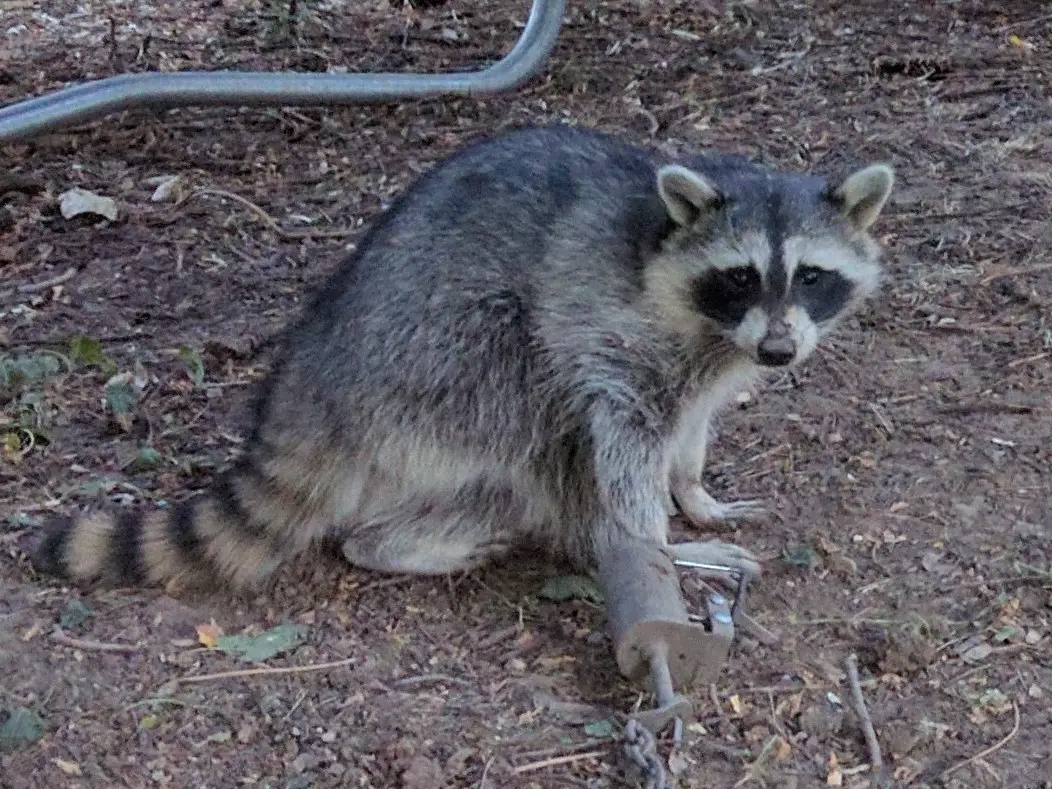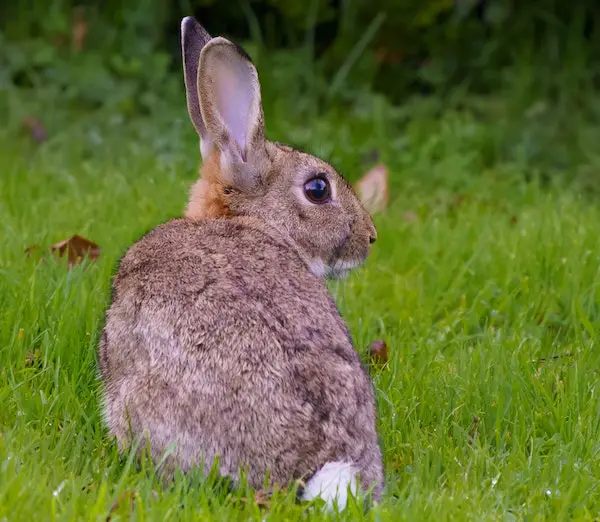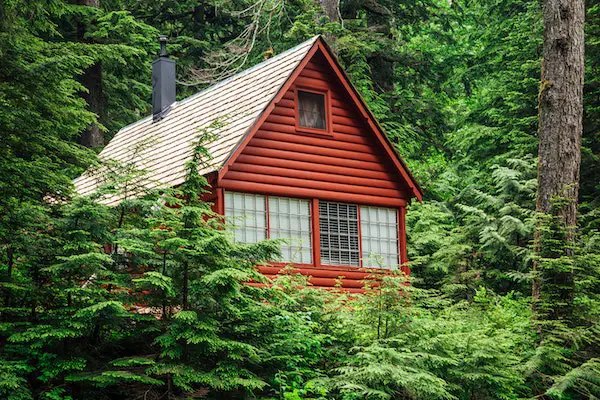11 Ways to Protect Your Pet From Coyotes- Some May Surprise You
Our pets are family members. We talk to them, cuddle them, and sometimes even dress them. We bathe them and brush their teeth. We take them to the veterinarian for regular checkups and purchase expensive food and treats. They sleep on beds (sometimes our own), make their own demands, and communicate with us through the language barrier. Obviously, we want to protect them from harm.
But who is their main predator throughout the Americas?
That’s easy.
It’s that wily coyote.
A coyote is a canine native to North America. It’s smaller than a wolf (what is the difference between a coyote and a wolf), and has similar habits to a jackal. They’re also known as prairie wolf, brush wolf, cased wolf, little wolf, and American jackal. They are usually a brownish–gray [i] but can be white, orange-red, or black.
Why the coyote?
These wild dogs are the most common predator in the United States and quickly spreading throughout the Americas. Native to 2/3 of the States, they live in the wild, rural, urban, and city locations. Once born and raised in an urban environment, that’s the home they prefer. We have no idea how many reside on our city streets. It could be one million or ten million. [ii] What we do know is that coyotes are here to stay.
Resourceful and adaptable, coyotes will eat just about anything except toads. Their diet includes fresh meat, carrion, fruits and vegetables, garbage, and your pets. They’ll chow down pretty much any food you will or won’t eat.
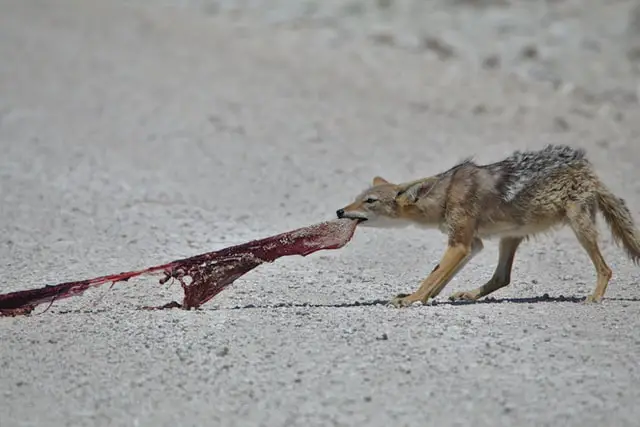
You may not even notice. Until your pet is missing.
A 2021 study by Rebecca Davenport in Culver City, California, reported that 20% of the urban coyote’s diet consists of free-range cats and 25% of garden fruits and vegetables. Hunting and killing of cats by coyotes in the greater Los Angeles area are higher than anywhere else in the country. [iii]
When do coyotes hunt?
Coyotes are nocturnal, hunting at night and most active at dusk and dawn. We are often too busy with our own activities during this time to watch for the brush wolf. They slip past buildings, trot by on sidewalks, and sometimes cross the street at intersections. While they live around us, coyotes avoid people. They are generally unaggressive and unobtrusive.
Unless you start feeding them.
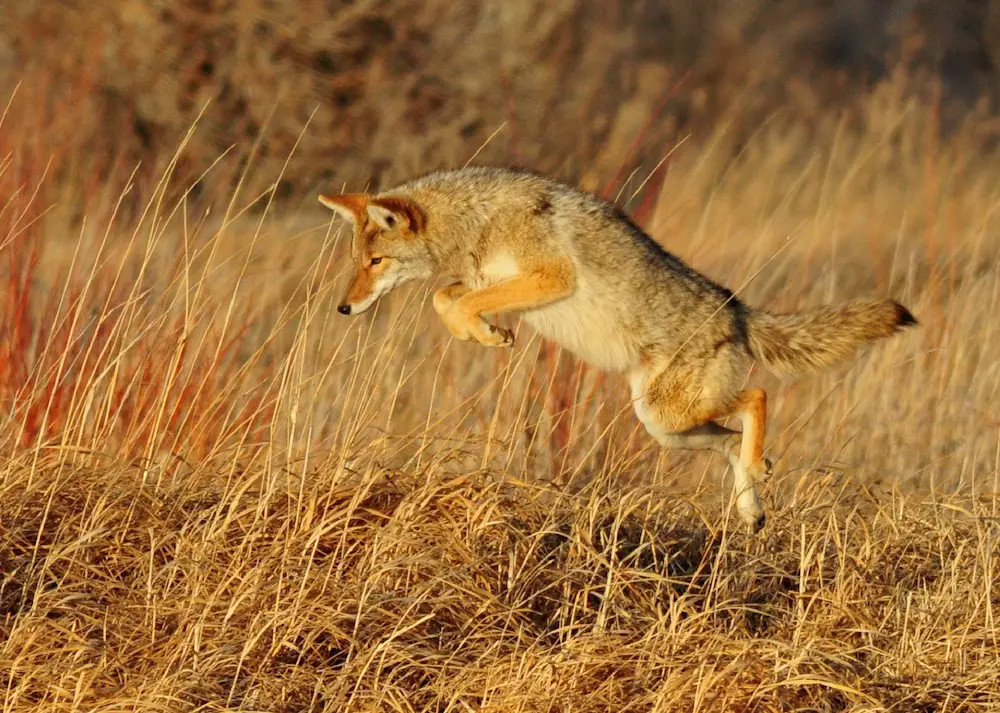
How do coyotes hunt?
While their main prey is small game, coyotes adapt to their environment. When they find their prey, they point like a hunting dog and then pounce with all four feet at once. They are fast, running up to 43 miles per hour. [iv] Cats can run up to 30 miles per hour. You do the math.
Coyotes are smart, too. They prefer to hunt alone but will hunt in packs when necessary. When faced with a hunting challenge, they will cooperate with other coyotes – or other species, like foxes – to obtain the desired meal. However, a small dog, cat, or even outdoor fishpond provides little challenge for these avid hunters, making backyard pets an easy meal.
“But coyotes live in the wild. Why would they target my pet?”
They don’t all live in the wilderness. Coyotes tend to live in the same environment as their birth. If they’re born in the city, that’s where they’ll live and die. It’s what they know. What they’re comfortable with.
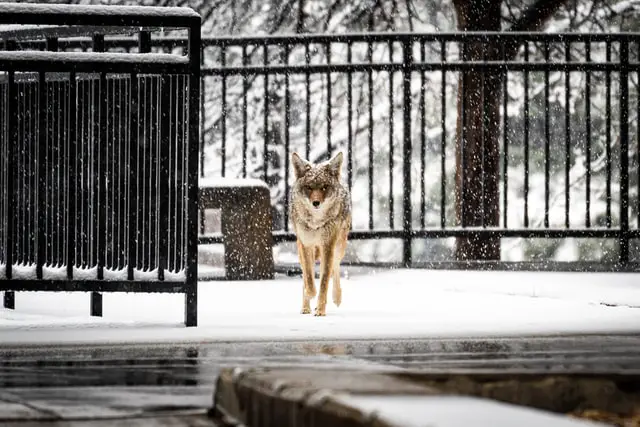
Coyotes target your pet because they are opportunists, pure and simple. These lazy creatures will take shortcuts to a quick meal, and a chance for fresh meat from an easy target may be too much to pass up. Strong, healthy coyotes may opt for mice and rabbits, but the old, pregnant, or very young won’t shy from a captive target. More urban coyotes won’t hesitate at all. So your pet may be the most convenient option available to them. And coyotes like convenience.
“Coyotes have all that wild, open space. They won’t come to my yard.”
Your unattended pet is a meal waiting to happen. You may have a fence around your backyard. Still, though it may slow some, coyotes can jump three feet into the air, and an agile coyote can even get over an eight-foot fence. [v] If you have a fence, six feet or more is the recommended height to keep them out. Since coyotes have been known to climb a chain-link fence, a good quality barrier may require more creativity.
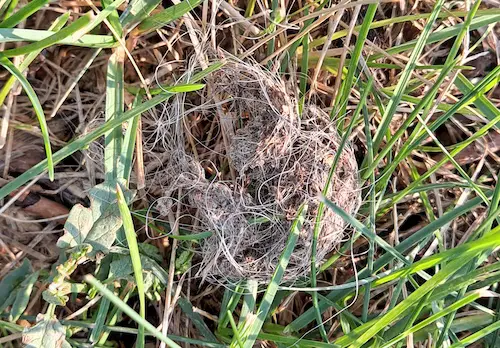
Related: Coyotes Are Pooping In My Yard – What Should I Do?
“But I live in the city. We don’t have coyotes.”
Coyotes are nocturnal creatures, often most active from dusk to dawn. They don’t want anything to do with you, just your meal-on-a-leash. Coyotes are regularly seen in New York City eating from dumpsters and raiding any food available. Just maybe not when you are out and about.
Related Post: What Do Coyotes Eat? Here’s Your Guide to a Coyote’s Diet
Here are 9 ways to protect your pets from coyotes
1. Do more than keep your pets on a leash – use a Coyote Vest.
What is a coyote vest? [vi]
A coyote vest is a pet jacket with chrome spikes on the back, sides, and collar. The back is a removable stripe to put a strip of long, thin, neon plastic spikes to repel birds of prey.
The vest saves your pet from being carried off by hawks, coyotes, and other predatory animals. After all, who wants a mouthful of spikes?
Here’s why it works:
- Protects your dog or cat from coyotes
- Defends your pet from other aggressive dogs
- Safeguards your small animal from large, predatory birds
- Creates new freedom for your pet to roam on camping trips
- Offers safety and confidence for your small pet
- Gives YOU peace of mind
Although we feel that a coyote vest is the best way to go, here are a few more options for you to look through. All the options below are stationary to your property, unlike a coyote.


See coyote vest prices on amazon ›
2. Use an ultrasonic, solar, animal repellent.
Although there’s no science to back it up, these emit ultrasonic waves, give off loud alarms, and use flashing, LED lights. The advertisement claims that they can keep animals off your property. And some of them are solar-powered and waterproof. [vii]

See Animal Repeller prices on amazon ›
Coyotes don’t like loud noises or flashing lights. This would be great, except that animals can adapt to light and sound after a few days.
Unfortunately, many of the reviews are considered fake, causing a waste of money spent.
3. Keep lids – and locks – on your trash cans.
Garbage draws rodents, and rodents attract coyotes. Rodents are one of the most common food sources for these adaptable creatures. Mice, moles, rats, opossoms, raccoons, skunks, and groundhogs will all dig through your trash, including coyotes. Latches and other locking mechanisms. (iv)

4. Keep your pets indoors and feed them indoors.
Obviously, your pet won’t like this, but it keeps them alive. You may not like it either from your pet’s vocalizations. However, by feeding them inside, you’re not leaving food out for wildlife to approach your home. Keeping your pets strictly indoor animals lengthen their lifespan by saving them from a coyote.

5. Don’t feed wild animals.
That includes coyotes. Feeding squirrels, birds, and deer from your property bring predators like the coyote to your front door. It’s an invitation for a preplanned meal if a coyote knows where its next meal will be. Before long, they may be hanging out by your house, waiting for your pets. (v)

6. Use an animal barrier.
An animal barrier is a 12-inch comb-like metal structure that drives into the ground at the base of the fence. This way, animals can’t dig underneath a fence. This barrier is placed below the above-ground fence. An added 8-15 inch protection deters tunneling under by anything larger than a mouse. (vi)
Placing an animal barrier beneath the fence that digs into the ground prevents coyotes from digging under the fence. They are, after all, crafty critters.


See animal barrier prices on amazon ›
7. Keep coyotes out of your yard and off your property by having a fenced yard.
Make sure it’s at least six feet in height. Keep it in good repair, replacing old, broken, or brittle slats or sections.
Here are the different types of fences.
Most effective fences:
- Heavy steel mesh fence – Most often known as a coyote fence, these barriers are often 5 ½ to 7 feet high with a 12-inch barrier dug into the ground and sometimes an added top to protect livestock or other animals.
- Latilla fence – These are small, wooden poles, usually from spruce or fir. Poles are usually 2”-3” in diameter and 6’-12’ in length.
- Coyote fence – these fences are the same as a latilla fence and are made from spruce, fir, or aromatic juniper. The poles are usually 3”-4” in diameter and 8’-12’ in length. The bark is sometimes left on for a more natural look. They’re hard to climb, difficult to chew through, and too tall to jump over. However, unless this fence is buried a foot below ground, animals – coyotes included – will dig under it.
- Traditional wood – This fence is a little tricky. The coyote will often try to jump or climb over but can get caught in the slats. Coyotes will also chew through the wood.
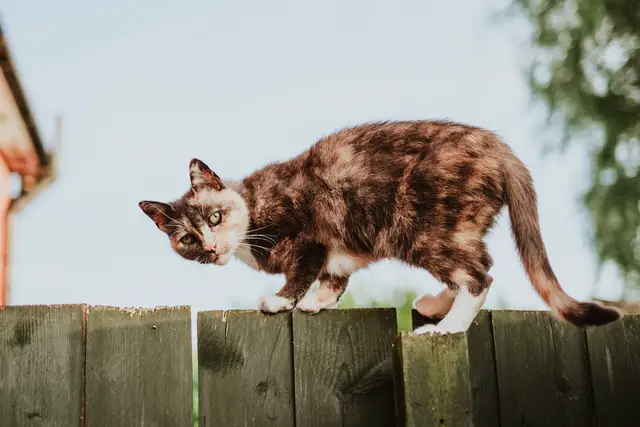
Least Effective:
- Stone fence – On average, coyotes can jump over a three-foot fence with no problem. However, they’ve been known to jump six feet. Stone walls are typically too low to stop a coyote.
- Chain link fence – Another fence made for climbing or digging. This is another fence that requires a 12-inch ground depth.
- Electric fences – these are typically most effective with domestic animals. A single touch and your pet or livestock stay in and away from the shocking barrier. However, a wild animal may simply jump the fence or get caught in the wires. Getting caught in a fence may short it out or break it. They are expensive to repair and often less effective.
- Barbed wire – Coyotes will jump or climb through this fence. They may sometimes get caught in it, but usually, they get right through it. Barbed wire is usually too far apart to be effective.
- Wrought iron – such fences are beautiful. Still, the bars are usually spaced far enough apart for a coyote to slip through. Although these metal fences are made of iron, they are not guaranteed to keep wildlife out unless spaced closely (and therefore more expensive).
- Lattice fence – these are pretty, but when it comes to coyotes, they are a basically useless barrier against them. Coyotes can jump, climb, and chew. This one gives them a ladder for climbing over or simply a few thin boards to chew through.
- Vinyl fence – Coyotes are resourceful creatures that can jump or climb over the fence or simply chew through it.
- Wattle fence – a wooden, woven barrier building style. Branches are woven between poles. They’re built with natural materials that blend with nature.
These can be high enough to prevent an animal from jumping over. But unfortunately, because of the way they are built, either the materials are thin enough to chew through or thick enough to climb.
But don’t worry. If you have a less effective fence, here’s how you can fortify it.
8. Use coyote rollers to keep coyote out and pets in your yard.
If you have a problem with coyotes jumping over your fence into your yard this is one of the most effective ways to keep them out. The coyote roller is a spinning pipe that is installed on the top of your fence.
When a coyote tries to jump over the fence and use its front feet to boost it self over the fence they hit the bar and it spins. The coyote will loose traction on the wall and fall right back off.
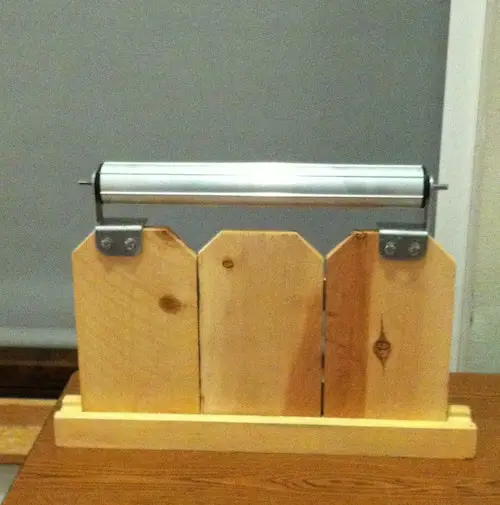
Image credit to: User: svantassel, CC BY-SA 3.0 https://creativecommons.org/licenses/by-sa/3.0, via Wikimedia Commons
Amazon has several options on getting coyote rollers for your fence. You can check those out on the coyote roller page on Amazon. Remember one of these will not work because the coyote will use a different part of your fence that is not covered by a coyote roller. You want to put them on all fences that a coyote or your pet may try to jump over.
9. Plant thorny bushes around your fence or yard to keep coyotes at a distance.

Some examples include (vii):
- Roses – These blossoming beauties grow in almost every part of the U.S., reaching zones 4-10 on the hardiness index. Thorns on a rosebush are often large and leave a mark.
- Japanese Barberry – This red hedge plant grows up to 6′ high with spiked branches, small red leaves, and red berries.
- Red Twig Dogwood shrubs – This security bush has another name; the Christ thorn. The 1″ sharp spines have a slightly toxic white sap. This fast-growing plant lives in zones 2-9 and can grow up to eight feet tall.
- Chinese quince – This deciduous bush has thorny branches and edible fruit. It thrives in hardiness zones 4-8 with full sun and grows 6-10 feet tall and 6-10 feet wide.
- Bougainvillea – This drought-tolerant vine grows in zones 9 & 10 and can reach up to 24 feet. The long, thin, spiky thorns keep trespassers out, but the paper-like flowers retain a view pleasing to the eye.
- Blackberries – this fruiting, invasive, wild vine has thorns a coyote won’t want to tangle with. Plus, it produces delicious berries for harvesting during late summer.
This only works if you’re protecting your property, not when you and your pet are out and about.
10. Install an electric fence to give coyotes a shock when they try to enter.
Wild animals do not like being shocked by electric fences. Electric fences keep are a good deterrent to keep coyotes out of your yard.
Coyotes will test or try the fence and get shocked and not want to try touching it again. Another way to help coyotes remember that the fence is electric is to put red flags on the fence every few feet.
This helps the coyote remember what it was that shocked it because a little white wire won’t leave a visual picture in their mind like the red flags will. This will help them to not want to test out the fence again.

Check more electric fence prices on amazon ›
11. Use coyote traps to catch and remove coyotes.
If coyotes become too persistent then they will need to be removed with traps. All traps in our article on what traps are good for coyotes will allow you to catch and relocate the coyote. Coyotes can also be humanly euthanized in these traps if necessary.
To see some of the traps we suggest you get to remove nuisance coyotes you can read the article on the best coyote traps.
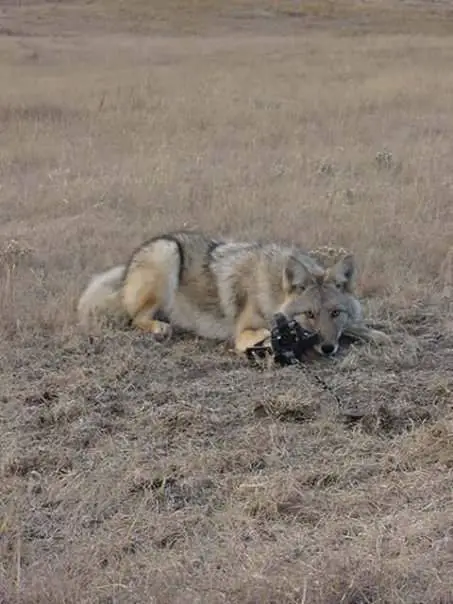
Remember to check all local laws and regulations in your area. If you need a professional trappers help you can check our list of trappers in your state. You can call your local state trappers association and they will have professionals in your area to help.
Deterring a coyote from coming near your home or pet does more than just prevent loss and heartache. It also helps your neighbors and the animals around you. Don’t forget, when a coyote becomes used to you, they stop fearing you, and that’s when they become brave and get aggressive. Don’t let that happen. Remember to keep coyotes away from you and your neighborhood.
Keep your pets indoors away from the traps so that you don’t accidentally catch them.
Sources
- i. Atlanta Coyote Project
- ii. The National Wildlife Federation
- iii. Digital Commons
- iv. speedofanimals.com
- v. The Orange County Register
- vi. Coyote Vest Pet Body Armor
- vii. Best Ultrasonic Animal Repeller
- viii. Find Any Answer
- iv. Waste Advantage
- v. journeyofanomadicfamily.com
- vi. The Humane Society
- vii. tipsbulletin.com
Beth Criman one of our writers worked on this article. You can become a writer for THF Outdoors follow this link.
